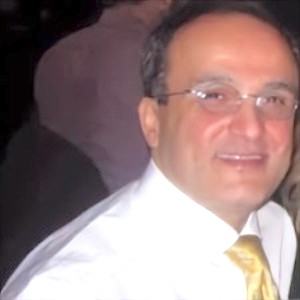Nobel Prize 2023: Quantum Dots' Transformative Impact

The Nobel Prize in Chemistry 2023 was awarded to Moungi Bawendi, Louis Brus, and Alexei Ekimov for their discovery and development of quantum dots. Quantum dots are tiny nanoparticles with unique properties, and they have found applications in various fields, including nanotechnology, physics, chemistry, and medicine.
What are Quantum Dots?
Quantum dots are nanoscale particles made up of just a few thousand atoms, typically in the size range of a few nanometers. At this scale, they exhibit quantum effects, which are phenomena that challenge our classical understanding of matter and have unique characteristics. These quantum dots are crystalline structures that can emit light when excited by energy, and the color of the emitted light can be controlled by altering the size of the quantum dot. This property of quantum dots has been harnessed to create vibrant and tunable colors, which find applications in technologies like television screens and LED lamps. Quantum dots also have the potential to impact fields such as biochemistry and medicine by being used to map cells and organs or even illuminate tumor tissue during surgery.
Significance of the Nobel Prizes and Recent Discoveries:
The significance of the prize winners’ discoveries and development lies in the following aspects:
Revolution in Nanotechnology: Quantum dots have opened up new possibilities in nanotechnology by enabling the creation of colored light and a wide range of tunable colors. This has applications in display technologies, including television screens and LED lamps, where quantum dots are used to manipulate the colors of light efficiently and precisely.
Size-Dependent Quantum Effects: Quantum dots, with their unique size-dependent quantum effects, have provided a new dimension in materials science. Researchers can now explore the properties of materials not only based on their chemical composition but also on the size of the particles, effectively adding a third dimension to the periodic table. This opens up new avenues for developing materials with tailored properties.
Advances in Medicine: Quantum dots have found applications in biochemistry and medicine. They are used to map cells and organs, making them valuable tools for research and diagnostics. There is also potential for quantum dots to be used in tracking tumor tissue in the body and catalyzing chemical reactions.
Commercial and Future Applications: Quantum dots have made their way into commercial products, such as QLED technology in television screens, which utilizes their unique properties to produce vibrant colors. Beyond this, quantum dots hold promise for flexible electronics, minuscule sensors, and encrypted quantum communication, indicating that their potential applications are still being explored.
The Nobel Prize in Chemistry 2023 recognizes the transformative impact of quantum dots on various scientific and technological fields, and their discoveries have paved the way for exciting developments in nanoscience and beyond. The prize was awarded to three laureates, and each of them contributed to the field of quantum dots:
Moungi G. Bawendi:
Topic of Research: Moungi Bawendi’s contribution was in the synthesis of quantum dots. He played a crucial role in revolutionizing the production of quantum dots. In 1993, he and his research group developed a breakthrough method for creating high-quality nanocrystals, which led to quantum dots with nearly perfect properties, including distinct quantum effects. This development made quantum dots more accessible for researchers and led to their widespread use.
Louis E. Brus:
Topic of Research: Louis Brus made pioneering contributions to the discovery of size-dependent quantum effects in particles. In 1983, he was the first researcher to observe these effects in particles floating freely in a solution. His work focused on particles made from a variety of substances, showing that the smaller the particles, the more they absorbed light towards the blue end of the spectrum. This discovery fundamentally changed our understanding of materials at the nanoscale.
Alexei I. Ekimov:
Topic of Research: Alexei Ekimov was instrumental in the early development of quantum dots. In 1981, he succeeded in deliberately producing quantum dots, which are nanoparticles causing size-dependent quantum effects. This was the first time someone had achieved this. He published his discovery in a Soviet scientific journal, which was not widely accessible to researchers on the other side of the Iron Curtain. Louis Brus, unaware of Ekimov’s work, made a similar discovery in 1983, demonstrating the size-dependent quantum effects of particles.
Together, these three Nobel laureates contributed to the discovery and development of quantum dots, which have had a profound impact on various fields of science and technology.

Hamed Nazari
Hamed is an innovative and results-driven Chief Scientist with expertise in Quantum Science, Engineering, and AI. He has worked for leading tech companies in Silicon Valley and served as an Adjunct Professor at UC Berkeley and UCLA.
